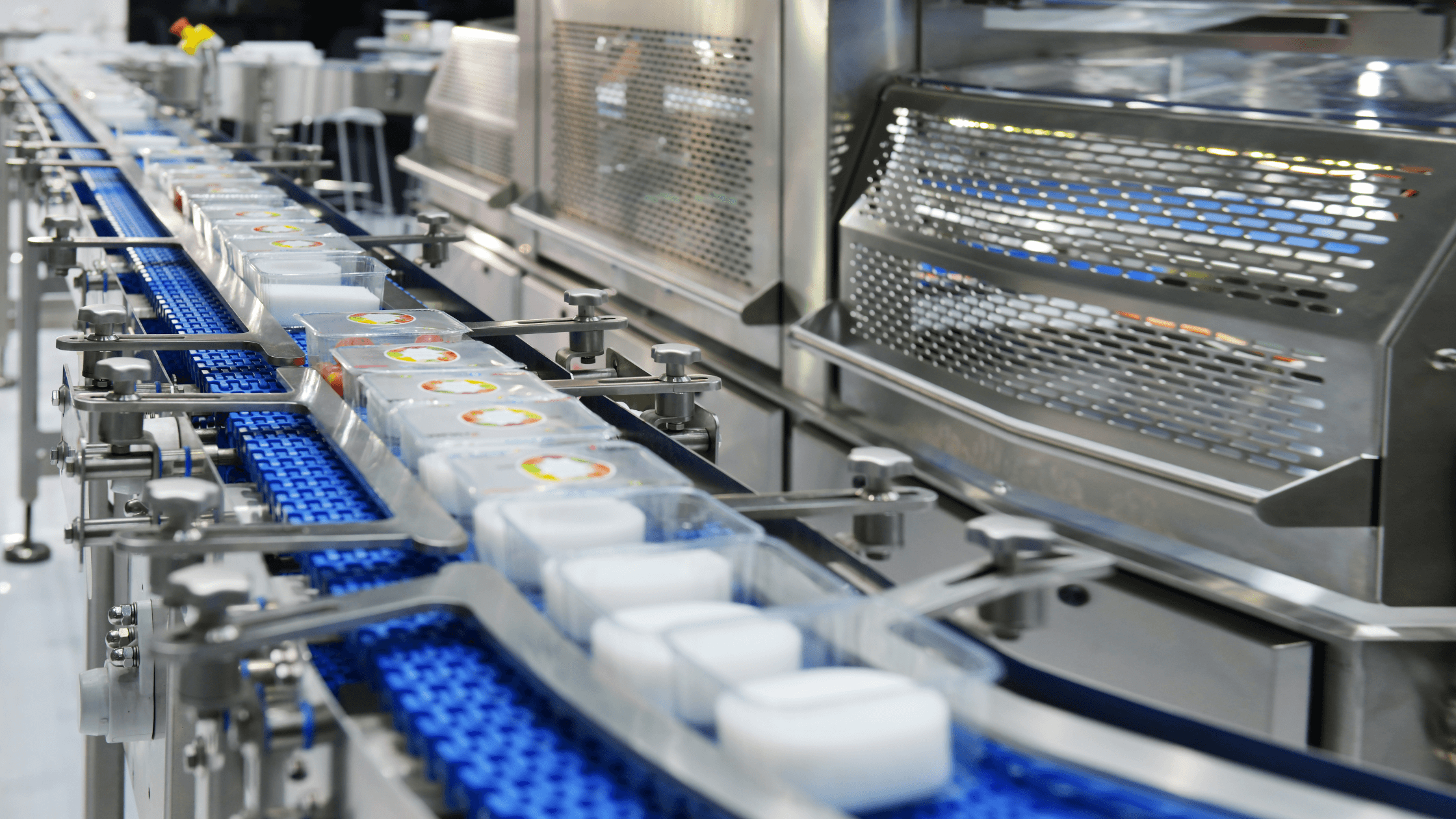The food and beverage industry is a growing and rapidly changing industry. As the global population continues to grow, the industry is constantly evolving and becoming more automated. Like many of the other industries we have covered on our blog, this industry is also being affected by the growth of Industry 4.0 and IoT, and we are seeing a growing demand for connectivity. In this blog post, we will cover the recent trends of the industry, some slip ring use cases, as well as the rotarX slip ring solutions we recommend for this industry.
The Food and Beverage Industry
With a growing global population, the food and beverage industry is expected to grow continually in years to come. Slip rings facilitate the transfer of power from fixed to rotating parts, and are used in most of the machines in the food and beverage production. With the growth of connected devices caused by IoT and Industry 4.0, there is an increased need for solutions that transmit data. In addition, a large quantity of data is being shared between machines to aid in planning and predicting for the manufacturer. Due to governmental regulations, the food and beverage industry is required to follow strict procedures regarding cleanliness, health, safety, and environmental morals. Therefore, the slip rings used may need to satisfy additional requirements for durability.
Slip Ring Use Cases
Bottle Washing and Cleaning Systems
Bottle washing processes are mandatory in the food and beverage industry to maintain a safe environment. There are a number of different systems that can be used, but typically, bottle washing equipment utilizes air, water, or fluids to wash and sanitize bottles period to packaging. In addition, there’s a variety of machines available, including ones that invert the bottles to use gravity and air to clean out the containers. Some machines also spray water or cleaning agents into the bottles, and the slip rings used have to withstand the exposure to water and chemicals.
Rotary Filling Systems
Once the bottles have been thoroughly cleaned, they are ready to be filled. There are a variety of systems that a manufacturer may choose to use, but one commonly implemented solution is the rotary filler. Common types include pressure filling machines, gravity filling machines, carbonated beverage fillers, and canning filling machines. All of these use slip rings to transmit data from one component to another to ensure the continuous movement of the machine.
Bottle Capping Systems
As the bottle fills, it will need to be capped to maintain freshness and ensure safety in transportation. Automatic capping devices are the most consistent compared to other machines. Consistency is important to ensure that all bottles are properly capped and maintain their freshness once they reach the end consumer. Automatic capping equipment utilizes cap elevators to supply caps to ensure that they are appropriately positioned for all bottles passing through the machine. This ensures a high rate of accuracy and speed when bottling lots of bottles.
Slip Rings From RotarX
Due to the high levels of automation within the food and beverage industry, there is a lot of opportunity for using slip rings. Here are some of our recommendations for use in the food and beverage industry.
Capsulated Slip Rings
Our capsulated slip rings are a versatile solution for use in machinery on the factory floor. The capsulated slip ring consists of a rotating and a stationary part. A series of contact rings are attached to the rotor, which are inoculated from each other. This, in addition to the encapsulated body, ensures that the slip ring is protected from dust and moisture to extend its lifetime and reduce the maintenance required. This slip ring solution comes in a variety of different sizes and is available in a mini-version as well, for applications where space is limited.
Automation Slip Rings
Automation slip rings can be used for more complex tasks in industrial power and signal transmission. Depending on the customer’s requirement, we offer two different qualities of automation slip ring: standard and industrial quality. Inside the housing, two to 108 rings can be processed for power and signal transmission. Ethernet, USB, RS, CANbus, video signals, and sensor signals are just some of the possible transmissions that this slip ring offers. With an aluminum housing, this slip ring is characterized by low electrical noise, low contact pressure, and a long service life.
Separate Slip Rings
The separate slip ring consists of two parts: the rotor and the brush holder. The two parts of the slip ring are kept separate, which offers increased flexibility for mounting positions inside the customer’s machine. As a result, the customer is free to choose the position of the rotor unit and can place the brush in the best suitable position towards the rotor unit. This slip ring has no housing, which means the customer must be careful to protect each component against dust or water. We offer a number of configurations for this slip ring solution, and are happy to help assist you in finding the best solution for your needs.
At rotarX, we are passionate about slip rings and have more than 25 years of experience. We pride ourselves on our ability to stay innovative and match the demands of the market. We work with our customers to find the best solution for their project, and offer a variety of customizable solutions.









